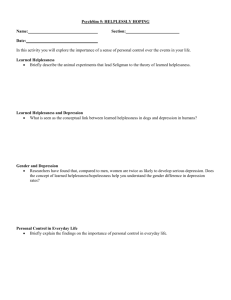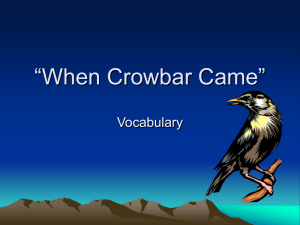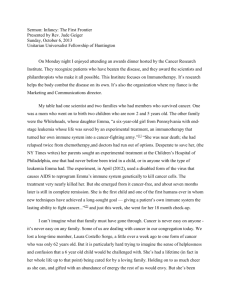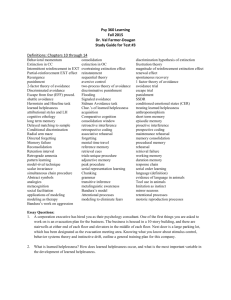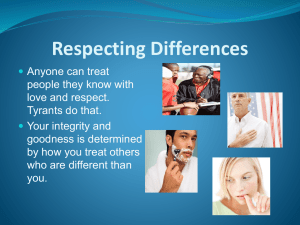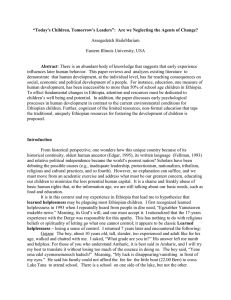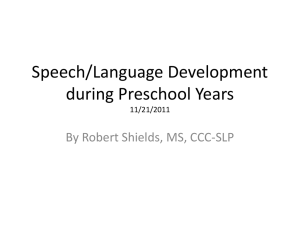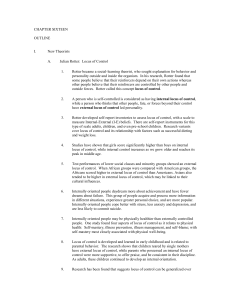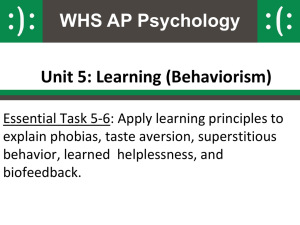Culture, Class, and Learned Helplessness:
advertisement
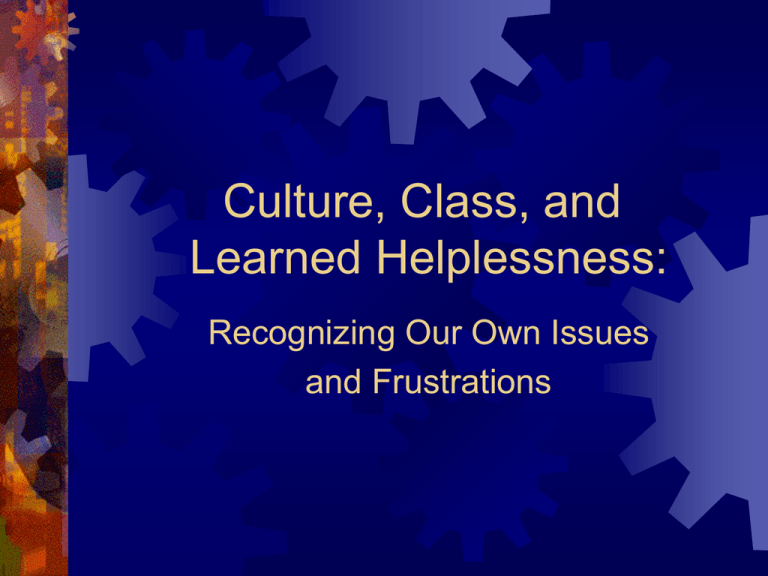
Culture, Class, and Learned Helplessness: Recognizing Our Own Issues and Frustrations presented by Keith A. Bailey, Ph.D. Keith Bailey Consulting www.keithbaileyconsulting.com keith@keithbaileyconsulting.com Copyright © 2006 by Keith A. Bailey How many times have you heard, thought, or said: “Why won’t they just try harder?” “He’s just given up?” “She just doesn’t want to be helped!” “Why should I keep helping them when they won’t help themselves?” This leads to: We will think about: Culture Class Middle-class mindset Learned helplessness Recognizing our issues and frustrations What we can do What makes up a Culture? Socio-economic Background Education Salary Job status How do we assess people by Class? Credit lines Disposable income Vacations When to start work or retire How many How safe is it paychecks they are from homelessness Physical and mental (Kliman & Madsen) well-being Gender Ethnicity Religion Sexual orientation Where they live Classes Superstars Business Owning Professional/ Managerial Working Class Underclass (Kliman & Madsen) Upper Middle Lower The Middle Class Mindset Just World Theory “You The get what you deserve.” American Dream “If you just work hard enough, you can be anything you want to be.” An Internal Locus of Control Learned Helplessness There “I’ll No Is No Justice get a bad deal no matter what I do.” Dream “Why work at it; it’s not going to get any better.” External Locus of Control Learned Helplessness Seligman’s experiments with dogs Learned Helplessness Motivational Deficit Cognitive Deficit Emotional Deficit Children and Learned Helplessness Abuse Can associate old events with new situations Attribution of failure made to self rather than the circumstances Personal helplessness Universal helplessness Learned helplessness can lead to depression. Learned helplessness leads to hopelessness Helplessness can be Unlearned Seligman’s We dogs … … the rest of the story. can help our children and families unlearn helplessness by helping them to succeed and gain control in their lives. But first … …we have to remember that our own class background will color our view of those with whom we work But first … …we have to understand our mindsets as opposed to theirs … and be sympathetic (understanding) or even empathetic (sharing of feelings). “…we must … fit our understanding to [children and] families rather than fitting [children and] families to our understanding.” (Kliman & Madsen) “The poor and lower classes, because of their lack of resources and power, often are unable to manage stressful events will, and thus remain highly vulnerable as they depend on the coping strategies of passive acceptance or fatalism simply because these are all they have.” (Pauline Boss) Then … … we have to deal with our frustrations and not give up on them, too. Vent to a peer or supervisor Be patient and persistent Problem solve Be patient Seek guidance Be persistent Pray or meditate … …to develop the patience of a saint But … don’t give up. … Because they need … …AND YOU MAY BE THEIR LAST HOPE !! Help and Hope Regain [or gain] self-esteem in self or family member and pride in themselves or in the family as a team Regain control over what happens to themselves or to the family members, individually and as a group. (Pauline Boss) Help and Hope Make some bit of sense out of what happened by finding some meaning in what happened. Share with others while actively working to prevent it from happening again. (Pauline Boss) Help and Hope Set them up to succeed Point out and praise every success, no matter how small. What are your successes in helping others to succeed? You are the embodiment of hope for someone. References Boss, P. (1988). Family stress manamement. Newbury Park, CA: Sage Press. Kliman, J. & Madsen, W. (1999). Social class and the family life cycle. In B. Carter & M McGoldrick (Eds.), The expanded family life cycle: Individual, family and social perspectives (pp. 88105). Needham Heights, MA: Allyn & Bacon. Martin E.P. Seligman, et al. Learned helplessness: A theory for the age of personal control.
